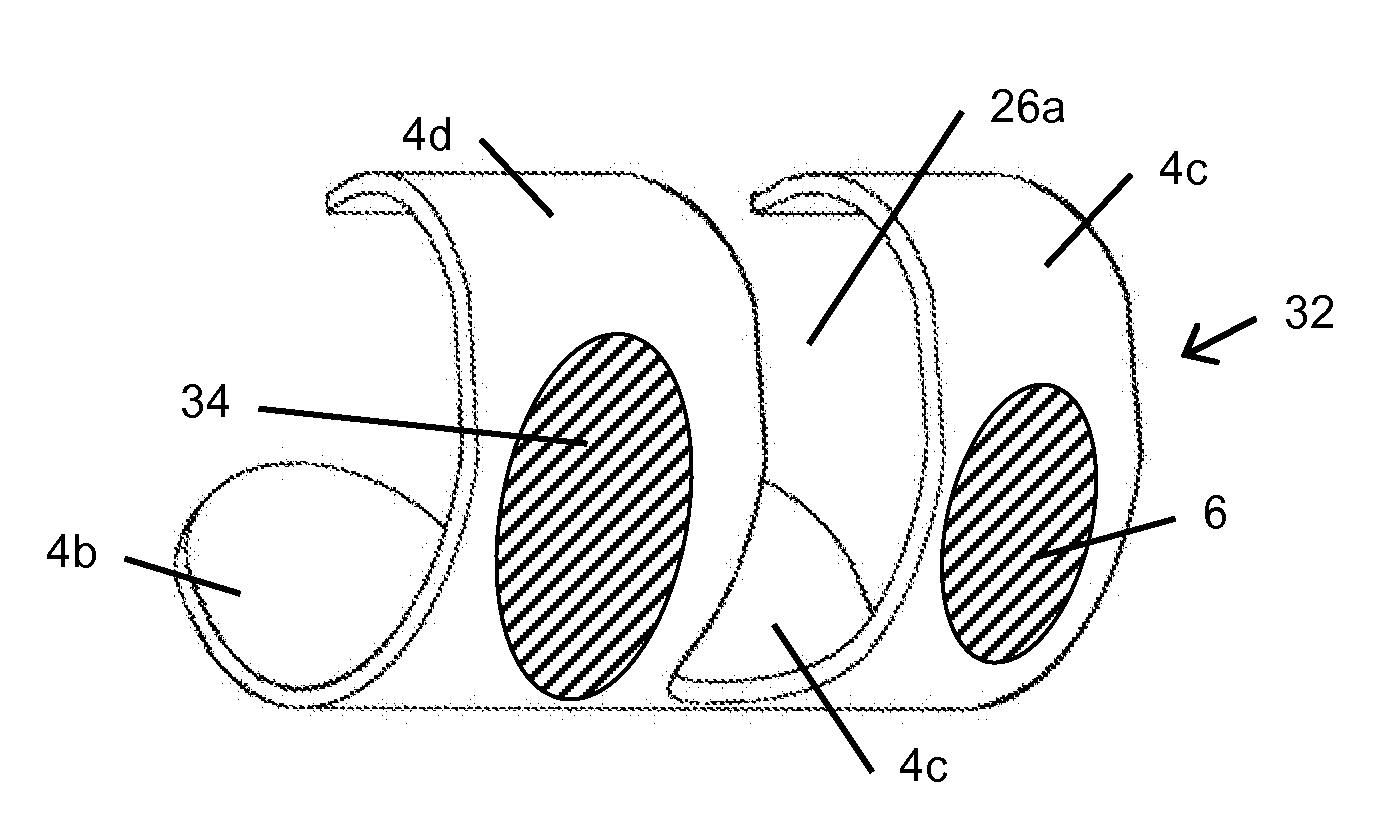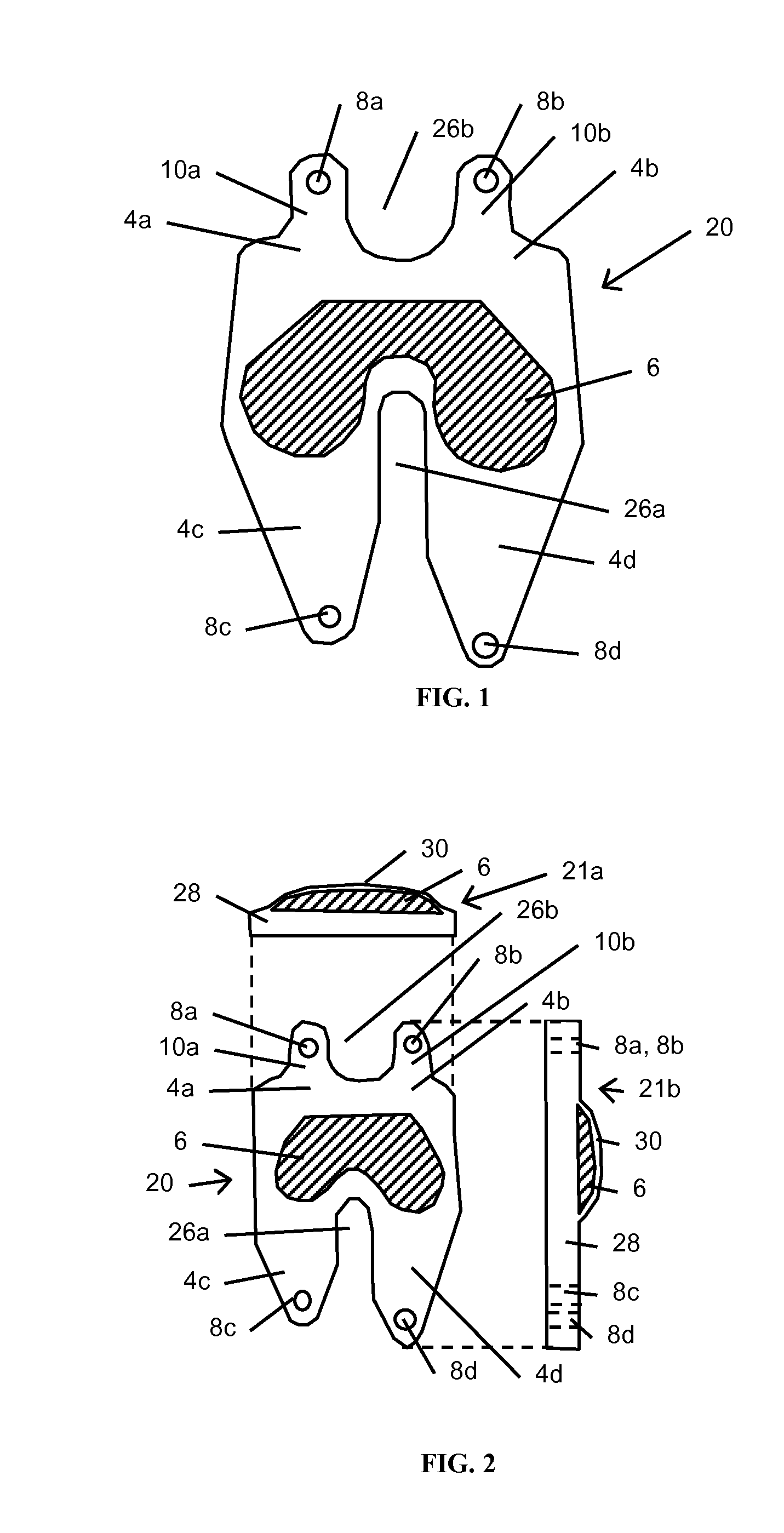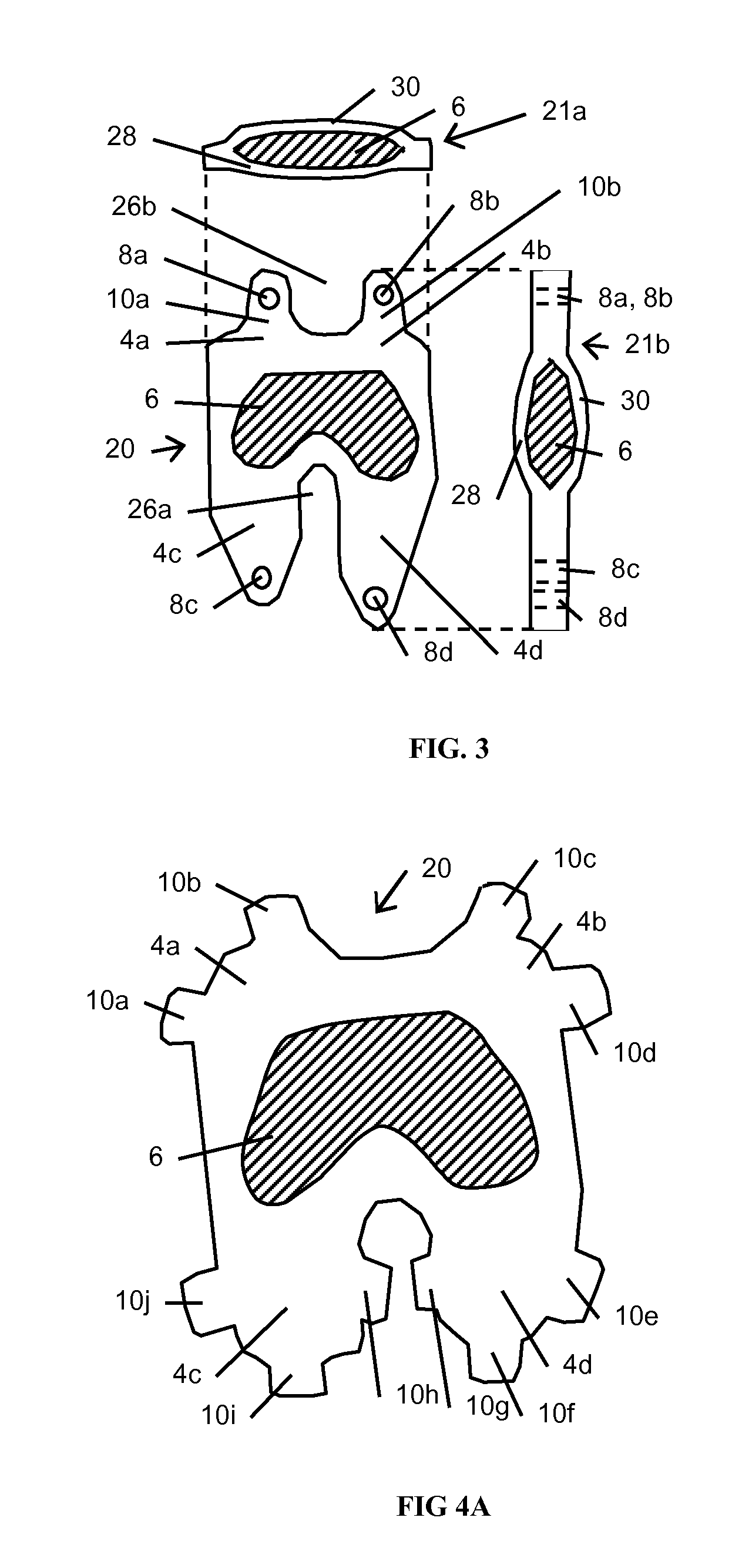Resilient interpositional arthroplasty device
a technology of interpositional arthroplasty and a device, applied in the field of arthroplasty, can solve the problems of unfavorable physiologic motion and shock absorption of arthroplasty, inconvenient operation, etc., and achieve the effects of improving physiologic motion and shock absorption, preserving joint motion, and removing pain and dysfunction
- Summary
- Abstract
- Description
- Claims
- Application Information
AI Technical Summary
Benefits of technology
Problems solved by technology
Method used
Image
Examples
Embodiment Construction
[0086]The present invention is directed to arthroplasty implants and procedures for a wide variety of joints such as, for example, hips, knees, shoulders, ankles, elbows, wrists, fingers, toes, temporomandibular joints and the like, but for clarity, as well as brevity, the discussion herein will focus on an implant for a knee joint or hip joint and an implant for replacing the talus bone of a patient's ankle.
[0087]Knee interpositional arthroplasty can replace existing total joint metal / plastic technology. It intends to fill the gap (literally in some embodiments of the implant) in cases where arthroscopic debridement fails to provide cure, since we can only ‘polish arthritis’ and ‘clean up the joints’ to date. The polymer medically inflatable implants may physiologically restore joint function. Padding is provided where cartilage is damaged, cushioning to both the femoral tibial and patella femoral joints when narrowed or pathologic. The implant in some embodiments is adapted to del...
PUM
| Property | Measurement | Unit |
|---|---|---|
| length | aaaaa | aaaaa |
| length | aaaaa | aaaaa |
| length | aaaaa | aaaaa |
Abstract
Description
Claims
Application Information
 Login to View More
Login to View More - R&D
- Intellectual Property
- Life Sciences
- Materials
- Tech Scout
- Unparalleled Data Quality
- Higher Quality Content
- 60% Fewer Hallucinations
Browse by: Latest US Patents, China's latest patents, Technical Efficacy Thesaurus, Application Domain, Technology Topic, Popular Technical Reports.
© 2025 PatSnap. All rights reserved.Legal|Privacy policy|Modern Slavery Act Transparency Statement|Sitemap|About US| Contact US: help@patsnap.com



